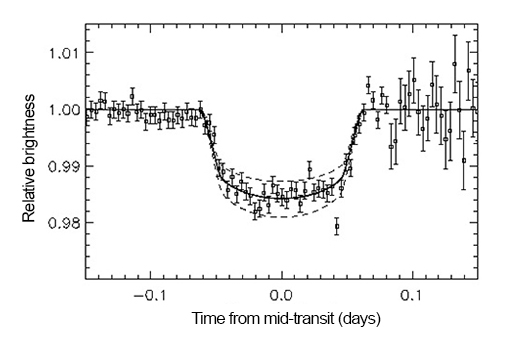2.1 HD 209458 b transit: discovered in a car park
HD 209458 b was originally discovered using the same technique that found 51 Pegasi b, the radial velocity method. However, things became really interesting when a group of astronomers working on the STARE (Stellar Astrophysics and Research on Exoplanets) project used a small telescope, set up in a car park outside a laboratory in Boulder, Colorado, to literally ‘stare’ at the star HD 209458.
What did they see?
Suddenly, the star dropped in brightness by about 1 per cent. It stayed fainter for around three hours, then the brightness increased again to the original level. This was the first detection of a transiting exoplanet.
Figure 2a shows the light curves of the first two observed transits of HD 209458 b. They have been shown on top of each other to make the shape of the transit light curve clearer. Figure 2b is the telescope that discovered the transit of HD 209458 b.


